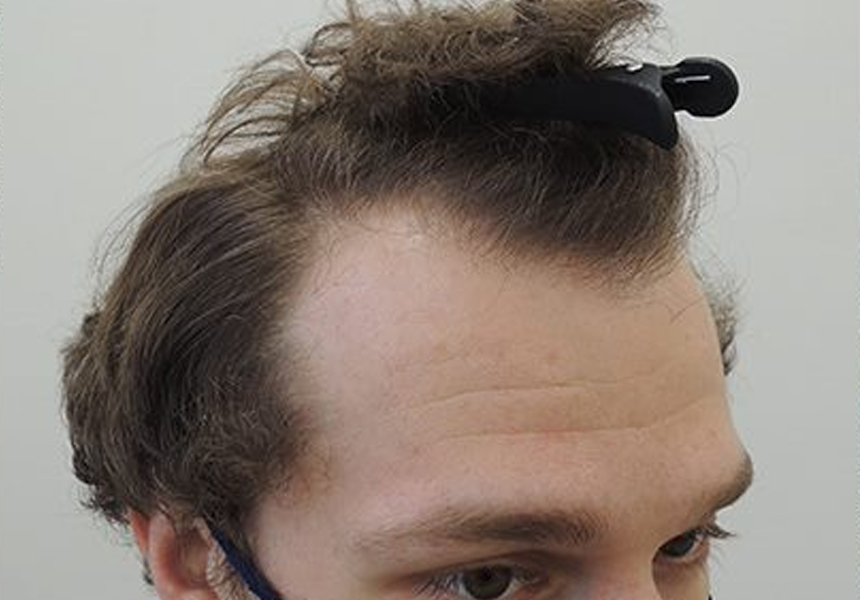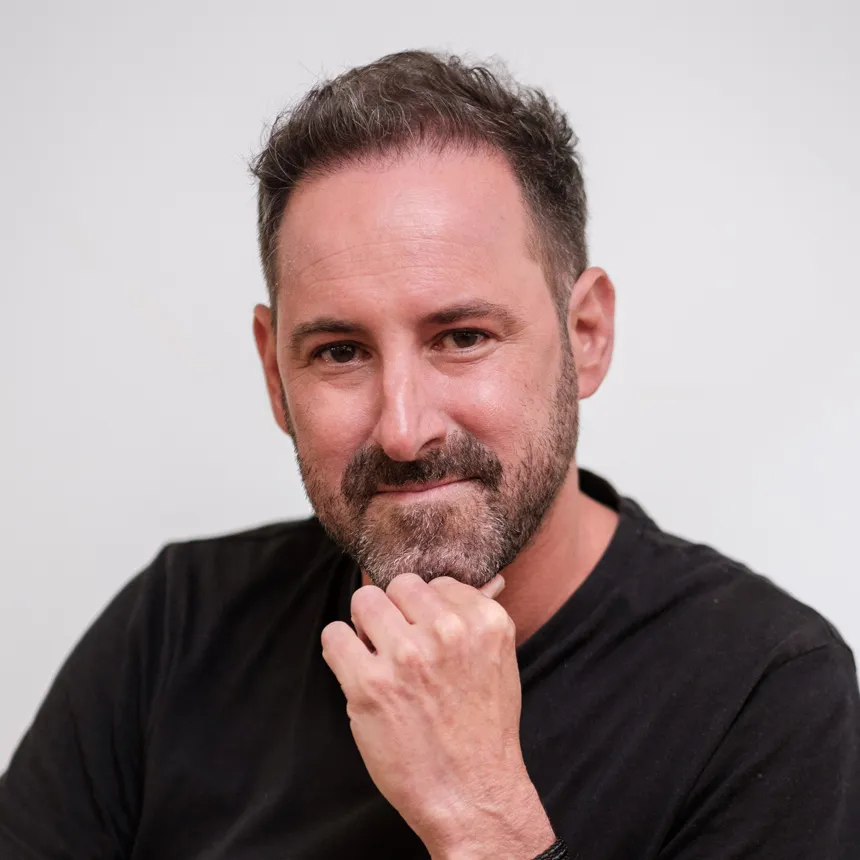By the age of 29, when he met Dr Mark Tam, Hayden has been suffering from hair loss for a decade. Starting to notice his hairline receding, albeit slowly, whilst still at university, his stressful job in the financial services industry seemed to increase his hair loss quite rapidly. Having stabilised the progression using anti-hair loss medication, he decided that a hair transplant was his best option for the long-term management of future hair loss.
Hayden was seeking the restoration of his hairline so he could leave behind his receding look. He wanted to achieve a 'fuller' appearance to his hair, hoping it would renew his confidence ahead of his wedding.



When considering the result of a hair transplant using Follicular Unit Extraction (FUE), it is easy to focus solely on the recipient area - the new hairline; but ignoring the donor area is a critical mistake. Dr Tam takes just as much care of your donor area, after all, it is a limited resource and one we might need to draw upon in the future.
His primary goal is to ensure that there are minimal signs of follicular extraction in the donor sites, with preservation a priority. Dr Tam uses smaller instrumentation for his FUE punches than standard hair extraction techniques. This enables him to extract hair follicles more accurately across a wide area which avoids impacting neighbouring hair follicles.
Typically using very small punches with a diameter of 0.75mm-0.85mm makes it technically more challenging to extract the hair follicles in an intact state, requiring extra care, concentration, and supreme focus. This precise, and more time-consuming method of follicular extraction is a fine balance between harvesting the target number of grafts and ensuring they are spaced out appropriately, so the intervention is barely noticeable. Clinical research also suggests that smaller extraction punch sizes can increase the regrowth chances in the donor area too; this could further aid preservation for future use.
The bonus with using smaller FUE punches is that the grafts harvested are also smaller, allowing for the use of smaller blades when implanting the grafts to create the hairline at the recipient site; high density hair transplantation can be achieved without causing additional injury to the area. Dr Tam hand cuts his own bespoke blades to achieve this level of craftsmanship. This skill sets Dr Tam apart as a specialist in the surgical restoration of receding hair lines and temple points.
Hayden's hairline has been lowered and restored, including at the temple points. With a rich donor area, Dr Tam was able to transplant hair to achieve 50+ grafts per cm² with minimal signs in both the recipient and donor areas, including creating a sharp, natural appearance to the temple points.
Hayden used to grow his hair long on top to hide his early receding hairline. Now, a year on following his hairline transplant, he has the confidence to wear it much shorter due to the duller, restored hairline. Dr Tam was able to spread his extraction over his entire donor area with minimal impact; in fact, he now wears his hair cut very short at the back and sides because you really cannot tell. Just the job for his forthcoming wedding, his hair looks great!






Dr Mark Tam explains the benefits of an assessment.


In order to save patients time and unnecessary costs, Dr Tam requires a pre-consultation screening to assess your suitability for surgery based on supplied photographs.
This form of assessment will only serve to give you an idea of whether you are likely to be suitable for a Hair Transplant, as well as providing you with a rough price estimate for the area you wish to have treated.
This assessment is complimentary but does not replace the need for a full consultation.
Once you have submitted your details along with the 3 required photos Dr Mark Tam will assess your suitability and you will receive a full report via email.
Recommended image types for uploading include JPG/JPEG and PNG.
Please do not press the back button or refresh the page after pressing the submit button.
* - Required field




























